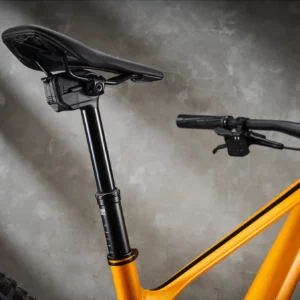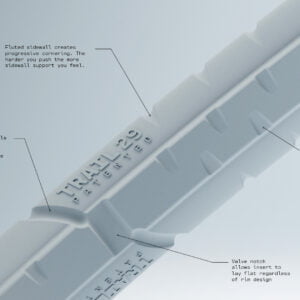Whatever you can do to give your brain a fighting chance to make good decisions is going to be the best protection you can get.
Over this winter I have begun to dabble in backcountry skiing. A big part of backcountry skiing is actually risk management. I’m by no means qualified to talk about backcountry skiing risk management. However, my reading has led me to think about how I manage risk on my mountain bike in the backcountry.
In backcountry skiing, you have lots of different safety devices available. Beacons, Airbags, Shovels, Probes, Avilungs etc. However, along with these devices comes a potential change in mental models and risk management strategies. The question comes up commonly in the backcountry skiing community if we as human decision-makers might be safer without some of these safety devices. The reasoning is that they alter our mindset and what we think we can “get away with”.
Backcountry Travel
I think the same conversation should be had for mountain bike safety equipment. To frame this conversation let’s talk about the type of riding I am thinking about. I’m NOT talking about bike park laps, or trails that are well-trafficked and within 10-30 minutes of a road. I’m talking about those “out there” adventures. For some of you reading this these may not be common areas to find on your trails. For me, however, I can very easily visit places where if things go south I could very well be spending the night.
So what does this all have to do with safety equipment? I think, that things like full-face helmets, knee pads, elbow pads, etc can modify the risks we take disproportionately to the protection they provide.
For example, when I strap on a helmet with a chin bar I know that I tend to charge harder than I would in a half shell. But, what scenarios is a full-face helmet really protecting me from? It will protect me better from life-altering head injuries and from knocking out my teeth. But, a full-face helmet does nothing to protect me from a deep artery slice or a broken ankle or leg that would immobilize me in the backcountry. Those types of injuries, when far from help can quickly become life-ending.
Your Protection Formula
So, what do I choose to do? Well, I know myself and my riding well enough to know that when I am kitted out I do feel more protected. Removing that protection makes me ride wiser. So, when I’m going deep, I wear a helmet (with MIPS), gloves, and no other protective equipment. I do however carry a satellite communicator.
I cannot stress enough how much this is not a prescription. We all have various levels of risk tolerance, skill on the bike and previous injuries, etc that makes each of our protection formulas different. However, the kit mentioned above, for me is what gets me in the right mindset for backcountry riding.
I think each of us as backcountry travelers should examine ourselves and figure out what the right blend is for each of us. For some wearing a full face might be totally advisable because you have a habit of dragging your face across the ground. For others even wearing gloves might be too much of “protective barrier” that insulates your mind from perceiving the danger you may be putting yourself in.
The most important thing to remember in the backcountry is that your brain and decision making are going to be the #1 thing that keeps you safe out there. Whatever you can do to give your brain a fighting chance to make good decisions is going to be the best protection you can get.





